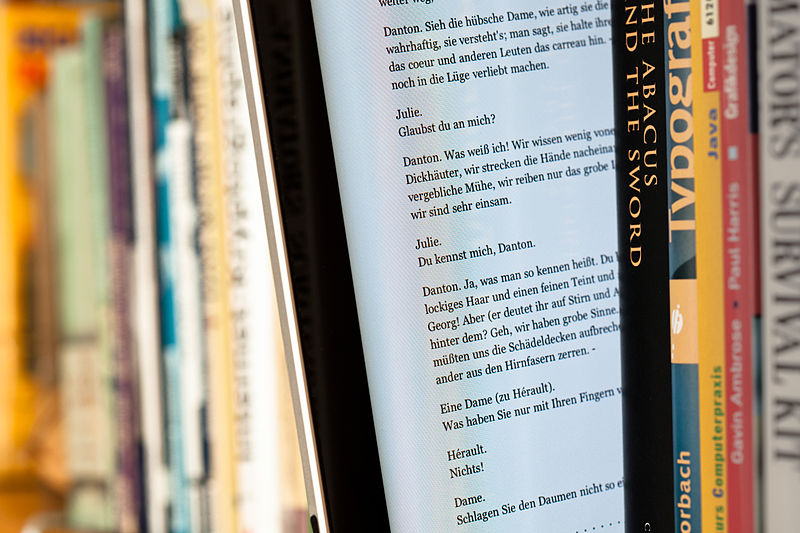 Too many people look at ebooks as some new, technological miracle that requires some completely new way of thinking. That’s rather weird to someone like me, who has been using eBooks since the late 1990s. It is also completely wrong – ebooks are essentially just books, as we have known them from times before Gutenberg. What changes is only the medium they are “printed” on.
Too many people look at ebooks as some new, technological miracle that requires some completely new way of thinking. That’s rather weird to someone like me, who has been using eBooks since the late 1990s. It is also completely wrong – ebooks are essentially just books, as we have known them from times before Gutenberg. What changes is only the medium they are “printed” on.
So the most critical requirement for an ebook implementation is the same as it is for any other book – subject, author, writing.
How eBooks are made
Nearly every author I know of these days uses a word-processor of some kind to write. Nothing changes here for an ebook: the author needs to write her book, which results in a manuscript, essentially a document file. Hopefully, it will have been checked for spelling and grammar issues.
This document is then processed to spit out a ready-to-distribute ebook. Many good word-processors can save a document directly in an ebook format – typically in ePub format (for just about any ebook reader device or application, including the Apple iPad), or in the MobiPocket format (used for the tremendously popular Amazon Kindle).
If the word-processor can’t save in ebook format, then there are applications, such the highly versatile Calibre application, that can be used to convert a wordprocessor document into just about any ebook format.
Finally, if you really just want to quickly turn a document of 5 MB or less into an ebook, just upload it to the site http://2epub.com, specify the desired output, and you are done.
How “ready” are Educational Institutions for eBooks?
Education institutions, especially in India, are really badly prepared for the whole concept of ebooks. Not only do they not even recognise the need for ebooks, they still push near-obsolete books as “required reading” – books that are likely never going to be updated and released in ebook format.
Even if they support the concept, they invariably resort to distributing documents in PDF format. PDF is NOT a usable ebook format – it is essentially a print-file format, meant to be printed. While it allows for highly complex formatting, is can usually be viewed correctly only on a PC screen. eBooks are NOT meant to be PC centric, and need to be able to adapt themselves for display on many devices – whether dedicated ebook readers, or general purpose devices such as mobile phones, PDAs or tablets like the iPad.
To be truly universal, ebooks should be in a recognised ebook format, such as ePub.
My first recommendation to educational institutions is not to try and take all the decisions about ebooks by themselves. Involve faculty and students. The latter are likely to be far more up to date about matters like ebooks, and will be able to offer far better and usable advice.
Secondly, abandon all ideas of using DRM (Digital Rights Management – a fancy term that basically means “copy-protection”). This is the 21st century, and there is not a single form of DRM that can survive even minutes in the hands of a dedicated pirate. If you plan to sell your DRM-”protected” ebooks for INR 100 each, then anyone with even a small amount of techical knowledge will be able to break the DRM, and distribute the ebook for free, or for a very small sum.
Also, the only one who is inconvenienced by DRM is a legitimate user. Someone using an illegal copy would not face any of the problems caused by DRM. It is for this reason that responsible publishers like O’Reilly do not use DRM for their ebooks, and they are doing very well indeed.
Thirdly, use the opportunity to update the reading material, switch to more modern books and publications. Especially in India, we usually suffer from an educational system that uses completely obsolete reading material, usually because it is very expensive to update and reprint books. eBooks do not suffer from this problem – they can easily be updated, and the new versions can be distributed by email or via websites to students.
How to avoid eBook Piracy
Simple – don’t bother. As mentioned earlier responsible publishers like O’Reilly do not copy-protect their ebooks, and theya re doing very well. People are not criminals by nature – if an ebook is available at a reasonable cost, and easily, then people will buy the book, not steal it.
No form of copy protection/DRM works. Don’t kid yourself – people have invested millions of dollars into developing DRM schemes, only to see them broken in minutes after they hit the market.
Just make sure that you price the ebooks right, and make them easily available. That’s the best way of protecting your “expensive technical resources”.
The way forward for eBooks in Indian education
Adopt ebooks to begin with. Source material that is available as ebooks, abandon stuff no longer updated.
Encourage the use of formats like ePub, which can be read (or easily converted to be read) on any ebook reading device – whether PC, ebook reader, tablet or mobile phone.
Keep talking to students and faculty – they will let you know how to improve things if they need improving.
Never forget – the purpose behind educational institutions is not to be “market places”, but to be centres of learning. The more you enable your students (and faculty) through ebooks, the more likely you are going to see credible results that speak well about your institution.
Parts of this article appeared in Edutech in February 2011